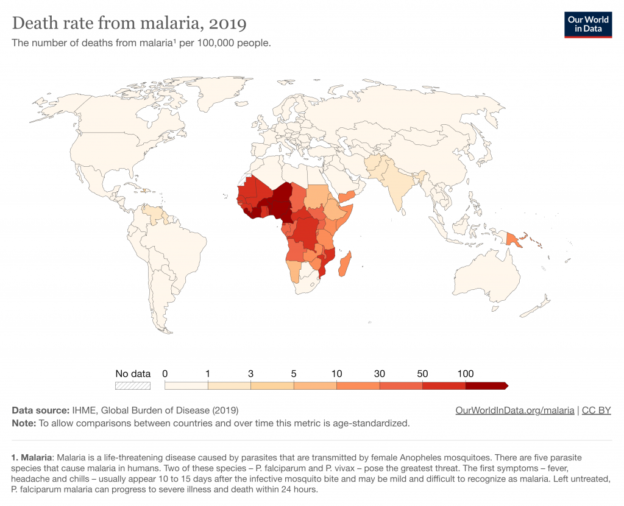Tag: Cost-effectiveness analysis
-
Apples, Oranges, and Outcomes
Imagine you are planning to make a charitable donation and want your gift to make a real difference. You’ve done your research and found three very effective programs: one provides cash transfers to increase the incomes of very poor households; one provides treatment to correct clubfoot, a congenital condition that causes pain and mobility loss;…
-
The fungibility question: How does GiveWell’s funding affect other funders?
How do GiveWell’s funding decisions influence the actions of governments, funders, and other organizations? Answering this question is an important part of figuring out which global health programs are most cost-effective and thus which we should support. We’ve already written about two key factors in our cost-effectiveness estimates: the cost per person reached and the…
-
The hardest part about fundraising for GiveWell
May marked my three-year anniversary as a Philanthropy Advisor at GiveWell. It’s a job I adore (as I’ve written about here and here), and I’ve recently been tasked with the exciting process of interviewing candidates for our growing team. One of the best questions I’ve been asked in this process is: What’s the hardest part…
-
How we work, #3: Our analyses involve judgment calls
This post is the third in a multi-part series, covering how GiveWell works and what we fund. Through these posts, we hope to give a better understanding of our research and decision-making. How we work, #1: Cost-effectiveness is generally the most important factor in our recommendations How we work, #2: We look at specific opportunities,…
-

GiveWell’s 2023 recommendations to donors
We’re excited about the impact donors can have by supporting our All Grants Fund and our Top Charities Fund. For donors who want to support the programs we’re most confident in, we recommend the Top Charities Fund, which is allocated among our four top charities. For donors with a higher degree of trust in GiveWell…
-

How we work, #2: We look at specific opportunities, not just general interventions
This post is the second in a multi-part series, covering how GiveWell works and what we fund. The first post, on cost-effectiveness, is here. Through these posts, we hope to give a better understanding of our research and decision-making. Looking forward, not just backward When we consider recommending funding, we don’t just want to know…
-
How we work, #1: Cost-effectiveness is generally the most important factor in our recommendations
This post is the first in a multi-part series, covering how GiveWell works and what we fund. We’ll add links to the later posts here as they’re published. Through these posts, we hope to give a better understanding of our research and decision-making. Why cost-effectiveness matters The core question we try to answer in our…
-
The winners of the Change Our Mind Contest—and some reflections
In September, we announced the Change Our Mind Contest for critiques of our cost-effectiveness analyses. Today, we’re excited to announce the winners! We’re very grateful that so many people engaged deeply with our work. This contest was GiveWell’s most successful effort so far to solicit external criticism from the public, and it wouldn’t have been…
-
Announcing the Change Our Mind Contest for critiques of our cost-effectiveness analyses
We’re extremely excited to be announcing the Change Our Mind Contest to encourage critiques of our cost-effectiveness analyses that could lead to substantial improvements of our overall allocation of funds. For all the details, see this page. Cost-effectiveness is the single most important input in our decisions about what programs to recommend, and we believe…
-
An update on GiveWell’s funding projections
As little as six months ago, we were in the position of having more funding available than we could spend on opportunities that met our very high cost-effectiveness bar. Today, the opposite is true—we don’t expect to have enough funding to support all the cost-effective opportunities we find. In this post we will: provide an…

